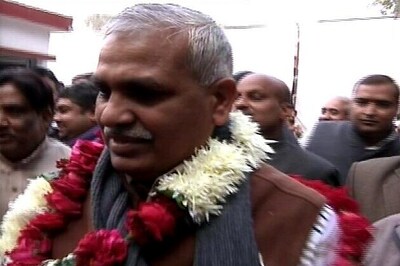
views
India’s apex bank, the RBI, wants to decelerate the pace of privatisation of public sector banks. Its paper, titled Privatisation of Public Sector Banks: An Alternate Perspective, details how public sector banks (PSB) fare significantly better when it comes to enhancing national financial inclusion. While the latest Union Budget had aired plans to privatise two PSBs, there has been no tangible progress so far.
This debate was recently refuelled by the suggestions of former NITI Aayog chairman Arvind Panagariya. The economist had proposed privatising all public sector banks except for the State Bank of India (SBI).
Undoubtedly, private banks take a serious lead when it comes to maximising investor profit and returns. Consider this. As of August 2022, public banking behemoth SBI had a market capitalisation worth Rs 4,75,101 crore. HDFC, its younger and private counterpart, commands a much higher market cap at Rs 8,40,185 crore.
Why Does Privatisation Sound Appealing?
The last decade has been a sobering one for public sector banks, which were hit hard by NPAs and frauds. In 2019, PSBs accounted for 85% of accounted bank frauds. Add to that how PSBs were profusely bleeding taxpayer money, and privatising these banks suddenly became a solid idea.
As per the 2019 Economic Survey, more than Rs 4,30,000 crore of public money had been invested in PSBs. For every Re 1 of taxpayer money that went here, there was a 23 paise loss incurred. But for the same amount invested in private banks, there was a 9.6 paise gain.
Even credit growth figures among PSBs in the last decade were laggard. In 2019, it stood at a mere 4.03%. In contrast, the same parameter in private banks jumped by more than 20% between 2010-2019. Clearly, PSBs seemed to be on the losing end.
Public Banks: Cogs of Financial Inclusion
However, the recent paper alluded this to the bigger social objective that PSBs were catering to. For instance, at 20.6%, the share of PSB ATMs in rural India is 2x compared to their private equivalents, who stood at 8.5%.
Public banks were also way ahead of private ones in terms of lending in rural India, particularly to the agricultural sector. As of March 2020, PSBs had a 65% share in the rural lending space, whilst private banks had a meagre 16%.
During periods of crisis, like the Covid-19 pandemic or other geo-political risks that threaten global financial stability, people supposedly gravitate towards public banks than private ones. For example, in 2021-22, PSBs managed to raise Rs 50,719 crore via 29 issues. During 2020-21, when the pandemic was at its worst in India, PSBs saw an influx worth Rs 58,697 crore. During the same period, private banks saw inflows worth Rs 33,878 crore. Naturally, the RBI does not want to go all big bang and guns blazing on privatising these important financial placeholders of progress.
Also, unlike claims of employee inefficiency in PSBs made by Panagariya in one of his papers, the paper noted that for the most part, the labour cost efficiency of these banks has consistently remained higher than private ones.
A former trade union leader of the banking industry, preferring anonymity, noted: “The government should listen to RBI advice carefully. We must understand that still, a big section of our society is not comfortable using online banking. For this section, public sector banks play an important role. Private sector banks do class banking while mass banking is still left to public sector banks. So slower the privatisation of these banks, the better.”
Read the Latest News and Breaking News here



















Comments
0 comment